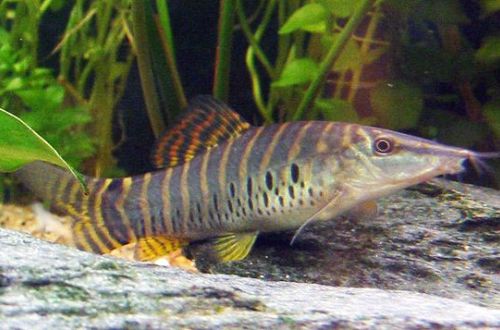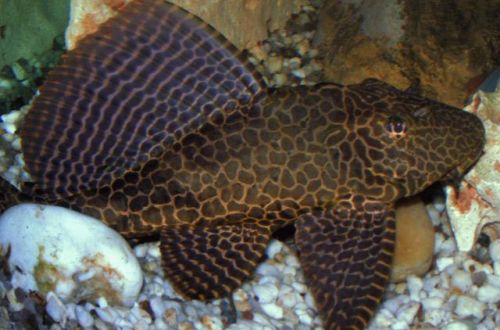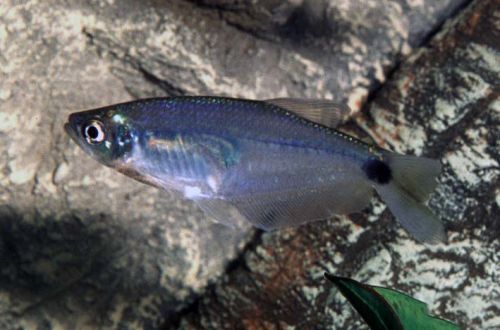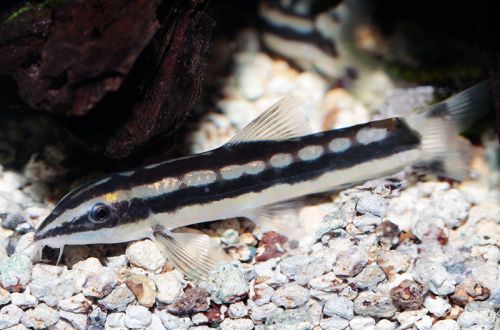
Ribbon Bocilia
Botsia Helodes or Ribbon Bocilia, the scientific name Syncrossus helodes, belongs to the family Cobitidae (Loaches). A large mobile fish, spending most of the time at the bottom. In favorable conditions, adult fish acquire a striped color. The content is quite simple and does not require large time and financial costs. The main difficulty lies in the choice of neighbors, since Botsii have a difficult disposition.

Contents
Habitat
It comes from Southeast Asia from the Mekong and Chao Phraya river basins in Laos, Cambodia, South Vietnam and Thailand. It occurs everywhere, inhabiting small flowing reservoirs and main riverbeds. With the onset of the rainy season, fish migrate many kilometers from their usual habitat. Thus, the natural distribution area covers various biotopes and is characterized by periodic changes in the external environment (turbidity, temperature, hydrochemical composition of water, etc.).
Brief information:
- The volume of the aquarium – from 350 liters.
- Temperature – 24-30°C
- Value pH — 6.0–7.5
- Water hardness – soft (2-12 dGH)
- Substrate type – sandy or fine gravel
- Lighting – subdued
- Brackish water – no
- Water Movement – Moderate/Low
- The size of the fish is 25–30 cm.
- Nutrition – any drowning
- Temperament – conditionally peaceful
- Content in a group of at least 5–6 individuals
Description
Adult individuals reach a length of about 25–30 cm. Sexual dimorphism is weakly expressed. It is possible to distinguish a male from a female by size, the latter will be larger. The body is elongated, the head is pointed. At the mouth are sensitive antennae. The coloration is gray with rows of oblique orange stripes running all over the body. In the lower part, the pattern is complemented by dark dots / specks. The fins and tail are striped with alternating orange and black stripes. In young fish, the color is duller.
Food
Omnivorous unpretentious species. In nature, the Tiger Fighter feeds on almost everything that it finds on the bottom. Soft plants, aquatic insects and their larvae, various mollusks, worms, etc. The home aquarium will accept most popular sinking dry, frozen and live foods. In the diet, it is desirable to provide herbal supplements, otherwise soft aquarium plants may suffer. These fish can also be a potential hazard to snails.
Maintenance and care, arrangement of the aquarium
The optimal size of the aquarium for a group of 5-6 adult fish starts from 350 liters. For the most part, the choice of decoration is a matter of personal taste of the aquarist, since the Ribbon Bocilia will feel great in almost any conditions. However, you should follow a few recommendations regarding the ground, lighting and some decorative elements.
It is worth using a substrate of fine gravel or coarse sand. A few snags and piles of smooth rocks/boulders will provide excellent cover. The lighting level is subdued. Accordingly, shade-loving hard plants are selected in the aquarium, planted in pots to avoid them being accidentally dug up by fish.
Maintaining high water quality is the key to successful management. Like any other fish that live in flowing waters, Botsia does not tolerate the accumulation of organic waste. Mandatory conditions are the weekly replacement of part of the water (30–50% of the volume) with fresh water and the installation of a productive filtration system.
Behavior and Compatibility
The content in the group is at least 5-6 individuals. With less numbers, Tiger Fighters can become overly aggressive and attack other tankmates. It is also worth avoiding the introduction of ornamental fish with large long fins, as well as small species. Good compatibility with calm fish of similar size living in the water column or near the surface.
Breeding / breeding
At the time of writing, no successful experiments have been found in breeding Ribbon Bocilia in a home aquarium. Basically, fry are obtained on fish farms, where spawning is stimulated with the help of special hormones.
Fish diseases
By their nature, non-ornamental fish species that are close to their wild relatives are quite hardy, have high immunity and resistance to various diseases. Health problems can be the result of inappropriate conditions, so before starting treatment, check the quality and parameters of the water. If necessary, bring all values back to normal and only then begin treatment, if necessary. Read more about diseases, their symptoms and methods of treatment in the “Diseases of aquarium fish” section.





